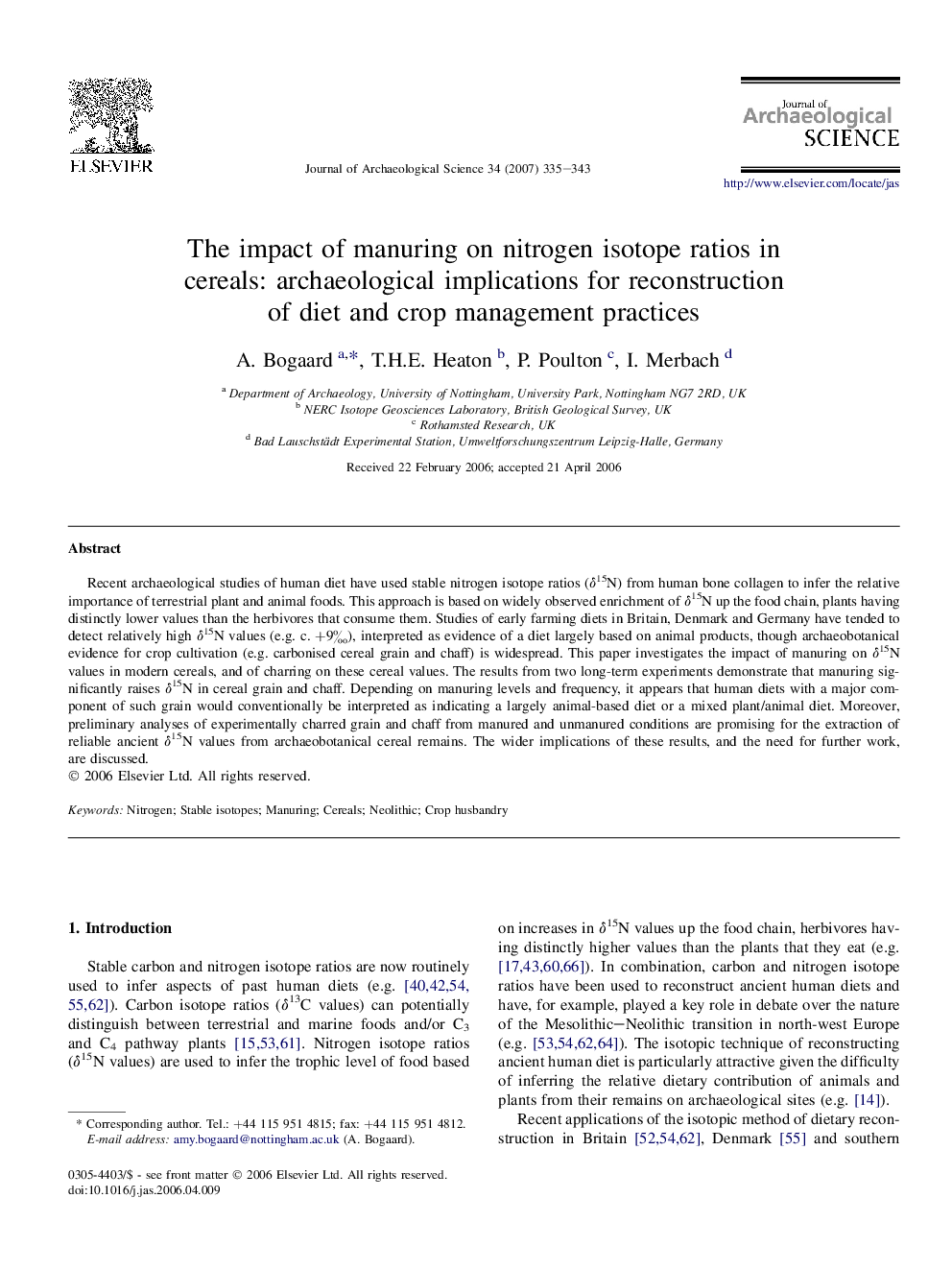| Article ID | Journal | Published Year | Pages | File Type |
|---|---|---|---|---|
| 1037636 | Journal of Archaeological Science | 2007 | 9 Pages |
Recent archaeological studies of human diet have used stable nitrogen isotope ratios (δ15N) from human bone collagen to infer the relative importance of terrestrial plant and animal foods. This approach is based on widely observed enrichment of δ15N up the food chain, plants having distinctly lower values than the herbivores that consume them. Studies of early farming diets in Britain, Denmark and Germany have tended to detect relatively high δ15N values (e.g. c. +9‰), interpreted as evidence of a diet largely based on animal products, though archaeobotanical evidence for crop cultivation (e.g. carbonised cereal grain and chaff) is widespread. This paper investigates the impact of manuring on δ15N values in modern cereals, and of charring on these cereal values. The results from two long-term experiments demonstrate that manuring significantly raises δ15N in cereal grain and chaff. Depending on manuring levels and frequency, it appears that human diets with a major component of such grain would conventionally be interpreted as indicating a largely animal-based diet or a mixed plant/animal diet. Moreover, preliminary analyses of experimentally charred grain and chaff from manured and unmanured conditions are promising for the extraction of reliable ancient δ15N values from archaeobotanical cereal remains. The wider implications of these results, and the need for further work, are discussed.
